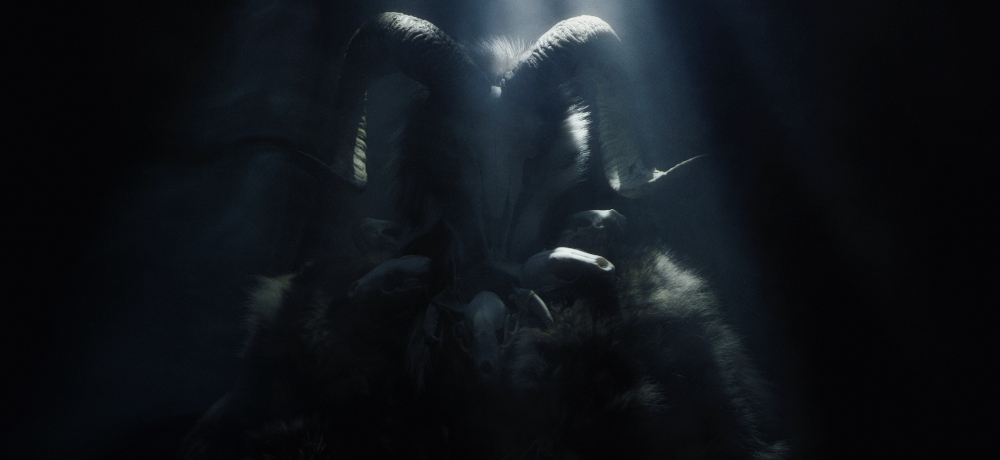


Folk horror can take on a variety of different forms. From classics like The Wicker Man, to new takes on tried and true fairy tales like Gretel & Hansel, to the contemplative pieces like The Witch, there are endless methods of digging into an often told story or notion that has been passed down through the generations.
Jordan Graham brings his own unique spin to this subgenre with his new film, Sator. Here, a family struggles to understand a spirit that has seemingly been among them for years. One that their grandmother Nani (June Peterson) had spoken to frequently in her youth. She was so connected to the entity, in fact, that she used to do automatic writing wherein she would enter a trance-like state and write down what she believed the spirit was telling her.
After the death of his mother, Adam (Gabriel Nicholson) has slowly grown more disconnected from Nonni, his siblings, and the world around him. He spends long periods of time in the woods surrounding his family’s isolated cabin, hunting deer (and who knows what else) while trying to come to grips with the tragedy that his family has endured. His brother Pete (Michael Daniel) and sister Deborah (Aurora Lowe) are coping in their own ways, but remain worried for Adam as he continues to pull away, exploring the darkness that seems to entwine them. As the family tries to move along with their lives, Sator watches and waits. This spirit is very much among them, and try as they might to avoid or deny it, they are already within its grasp.
The nature of the plot puts Sator squarely in the folk horror category—a strange spirit has stalked this family for years, and knowledge of it has been passed down through the generations. But what makes it even more fascinating is that it is based on things actually experienced by Graham’s grandmother, June, who plays Nani in the film. June actually did do a number of automatic writing sessions when she was younger, supposedly with an entity calling itself Sator. He has been a part of her life for as long as she can remember, and is something that she eventually passed along in story to her grandchildren.
Graham even goes the extra mile in blurring fact and fiction in the way he constructs his film. Not only does he cast his grandmother as essentially herself, but he also intercuts home movie footage from his childhood into the narrative that he is creating.
It is this blurred line and the melding of life and storytelling that takes us through the looking glass and makes the heart of Sator’s story all the more fascinating. Not only did Graham create a film based on a story that was a part of his family, he created it in a way that shines a light on the nature of that story as a folk legend.
The film struggles at times to balance its own weight; the stunning landscapes that convey a sense of isolation, the hazy, dreamlike moments that can quickly take a nightmarish bend, and the scenes of the family just trying to connect with one another often find themselves at odds, each one vying for the attention of the audience. But the overall look and feel of Sator is one that completely envelops the viewer and brings us into Graham’s dark fairy tale. It is a story that leans hard into its roots to create something very new and very terrifying.
Movie Score: 4/5